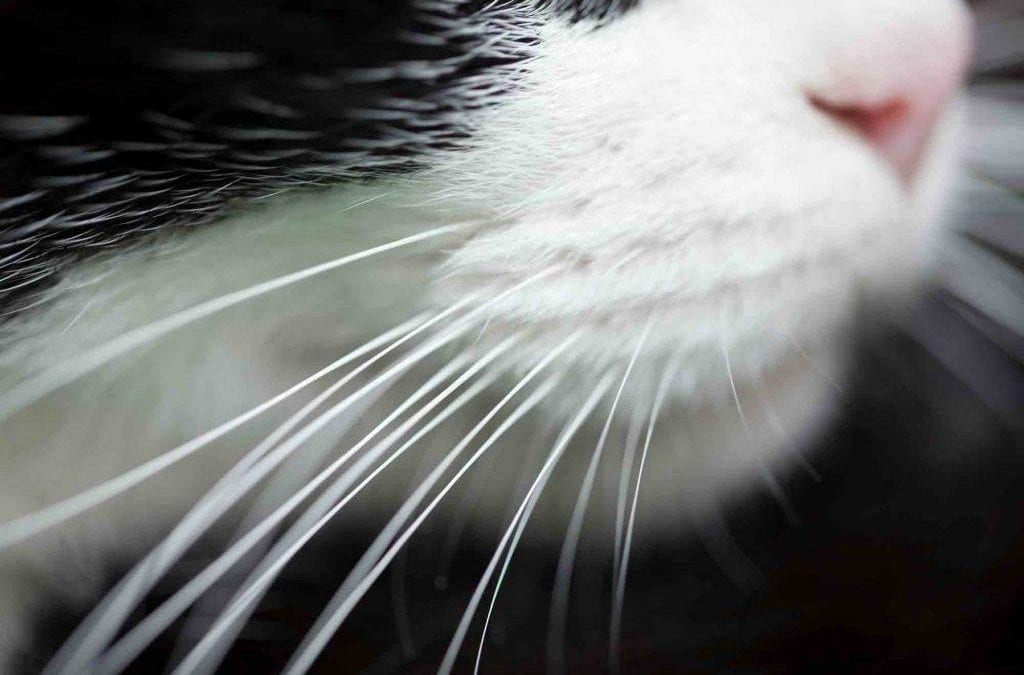A large part of a feline’s handsomeness lies not in those fancy, pointy ears, triangular nose, or those gleaming eyes. While these features are amazing, cat whiskers account for a great deal of how a cat looks. Some whiskers are long and almost curly at the end; others are short and sturdy. However they appear, it’s what cat whiskers can do for your cat that really matters.
Glimpse the Great Mystery
Who would have thought the whiskers that adorn either side of the nose, fill in the underside of the chin, and punctuate the areas above the eyes could have so much power? Cats also have whiskers on the backsides of the front legs, just behind the wrist.
Not just hair, cat whiskers are classified as vibrissae. Not just a neat word, vibrissae refers to the vitally important sensory tissues that are buried beneath the skin and are connected to the tips of the whiskers.
A Close Look at Cat Whiskers
A typical cat will have about 10-14 whiskers on each side of the nose. Their powerful sensors detect danger, prey, calculate direction, and even communicate feelings to astute observers. Indeed, even subtle twitches or tucks can indicate what’s going on inside that beautiful feline brain.
Gauge That Space
Cats can easily slip into places that we wouldn’t normally think they’d go. Part of this ability has to do with their whiskers. They can sense how big a space is depending on the width between the tips of whiskers on either side of the face. Indoor cats tend to suffer from nearsightedness, but they are not close-sighted–meaning they cannot see objects less than a foot from their face. Instead, they rely on whiskers to pick up air movements and feel other environmental stimuli.
Feline Feelings
The tail and ears are very communicative, but the whiskers play an important role in showing true feelings. For instance, when cat whiskers are pointing forward, a cat is considered threatened or focused. When tucked back closer to the face, fright or anxiety may be troubling a cat. Relaxed whiskers are seen on a relaxed cat.
Keep ‘Em Happy
To keep those whiskers relaxed and happy, do not ever pull or pluck them out. This can be disorienting for a cat who depends on whiskers for spatial awareness. Cats will naturally shed their whiskers periodically though.
Also, purchase food and water bowls that are shallow and wide. It can be irritating to a cat when the whiskers repeatedly rub against the sides.
Union Lake Pet Services is always here for you and your cat. If you have any questions related to cat whiskers, feline behaviors, or overall health and wellness, we invite you to reach out to our team.

